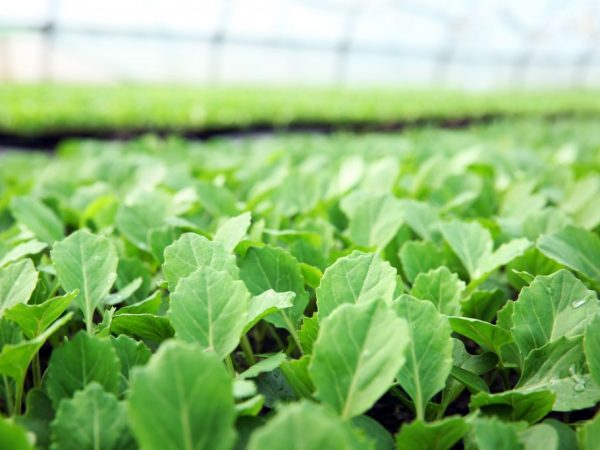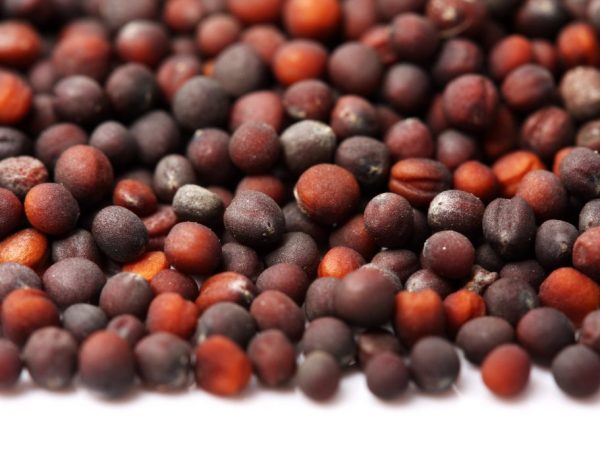Number of days of emergence of cabbage
When growing cruciferous seedlings, the main thing is to time it correctly. If the shoots appear too early, then by the time warm weather sets in, the seedlings will have time to stretch out and outgrow. Therefore, it is important to consider the days of emergence of the cabbage.

Number of days of emergence of cabbage
Seed germination time
The germination time of white cabbage seeds does not depend on the characteristics of its variety. If the seed is fresh, and its shelf life is no more than 2-3 years, then the first shoots will appear as early as 10 days after planting. If the seeds have been stored for a long time, then they will germinate not earlier than 15 days, and, perhaps, they will not hatch at all.
Ultra early
Ultra-early and early ripening varieties are planted in early March. They are suitable for growing in greenhouses. Seeds sprout there rather quickly and develop better, since there is no need for transplantation. So the rhizome is not injured and the plant does not need to spend energy on acclimatization to a new place of growth.
Early
Early cabbage is sown more often from March 15th. In order to harvest the crop 2 - 3 weeks later, the seeds are sown on the 27th - 30th of this month. Such cabbage emerges later but also ripens much later. According to this scheme, many get young juicy heads of early cabbage in two stages. This is beneficial for farmers whose farm is focused on selling products.
Mid-late and late
Medium and late varieties of cabbage are sown from April 10, as they need to be planted much later. Late varieties are sown on April 17-25, but most often they are planted immediately in open ground, and then they are simply thinned out.
Seed germination and growing conditions
The germination days of cabbage seeds directly depend on the care of the plants. In order for cabbage sprouts to appear on time, it is recommended to follow agricultural techniques and provide the seeds with suitable conditions. An important role in this is played by:
- the quality of the planting material;
- correct pre-sowing treatment;
- fertile and well-heated high-quality land;
- air temperature not lower than 15 ° С;
- good illumination;
- lack of drafts.

Choose quality seeds for planting
If the soil is not warmed up enough, then the seeds can begin to hatch only after 15 - 17 days. This also applies to low soil moisture.
How much granulated cabbage sprout
It is worth noting some features of the emergence of seedlings when planting granular seeds. Such planting material has a higher germination rate and is more expensive than conventional seeds.
Each seed is individually dipped into a special solution, which, after hardening, turns into an individual granule. It contains mineral fertilizers, which are sufficient for the first time for a young sprout. Such seeds do not need to be pre-soaked, so they germinate longer.
In a well-moistened soil, the shell swells and dissolves within 3 - 4 days.Then, after 10 days, the first shoots already appear.
How to speed up the emergence of seedlings
Soaking cabbage seeds in melt or rainwater helps to shorten the germination time by several days. It will take about 12 hours. During this period, you need to change the water 3 times and from time to time gently mix the planting material.
Next, the seeds must be laid out on a damp base, such as felt, paper, cloth or gauze. Moreover, they must be covered with the same material. Germination should take place at a temperature of 15 to 25 ° C.
In addition, there are more complex techniques to accelerate the germination of cabbage:
- Bubbling is the essence of the method in soaking the seed in water, which is previously saturated with air.
- Hardening is a method in which the seeds are alternately exposed to cold and warm air.
- Vernalization - before sowing, the material is for a long time at low positive temperatures.
Before planting the material in the ground, it will be useful to warm it up under the sun's rays or the light of a lamp for a couple of hours. This will improve the advancement of juices and nutrients to the seedlings.
Why the seeds don't sprout
If the germinated seeds did not germinate as expected, you need to think about what could affect the delay. Perhaps these are too low ambient temperatures. A temperature from 15 ° C to 21 ° C is considered suitable for timely germination. If the degree is lower than necessary, the seeds stop development. They expect more suitable conditions.
There is one more reason why the planting material will not sprout after a certain period of time after sowing. Increased soil moisture or lack of drainage at the bottom of the seedling box leads to rotting of seeds. In addition, a humid environment is favorable for the development of fungal diseases that affect young shoots immediately after they appear.
Conclusion
The day after planting the seedlings will sprout after sowing largely depends on the quality of caring for it. It is also important to be careful when purchasing planting material. You should not buy seeds of dubious quality, as well as those with an expired shelf life.


